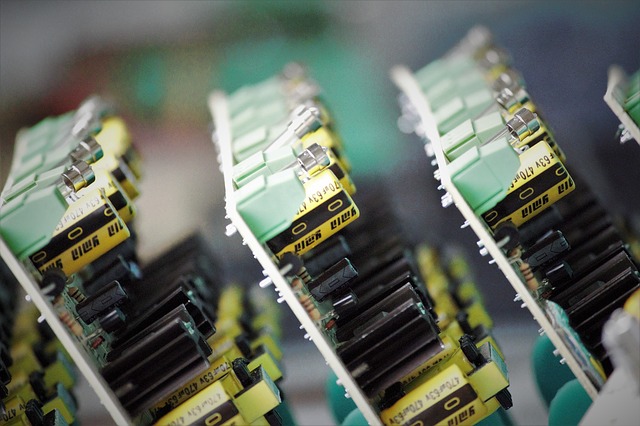Printed circuit boards or PCBs use electroplated through-holes and heat and flame-resistant high dimensional stability substrates for various electrical and electronic products. With the advancement of semiconductor technology, components are getting physically smaller, and the demand for compact products with higher functionality is also on the rise. According to PCB Trace Technologies Inc, there is now a greater demand for advanced PCB technology with higher component density.

Although PCB technology is in existence since 1967, these were standard PCBs with through-hole components. PCB technology has since improved with multiple and flexible lamination, resulting in very thin multilayer boards, use of surface mount technology components for greater component density, and microvia technology for very high wiring density. The use of such advanced technologies is visible in the highly functional handheld electronic products like smartphones and wearables. This has culminated in advanced PCB technology, also known as High-Density Interconnection or HDI technology.
Standard PCBs
Traditional standard PCBs with single and double layers has served the industry in various capacities for long. The major criteria defining standard PCBs is their thickness and panel size. For instance, standard boards are more common with thicknesses of 0.78 mm (0.031”), 1.57 mm (0.062”), and 2.36 mm (0.093”). Standard panel sizes are 9”x12”, 9”x24”, 18”x12”, and 18”x24”. Panels usually require a border without components for handling. Standard boards also make use of Plated Through-Hole or PTH technology for creating vias. Drilling with drill-bits is the most preferred method for creating the holes for vias in standard PCBs.
Advanced PCBs
Advanced PCBs or High Density Interconnect boards make use of the micro-via technology. Thin laser beams drill very small diameter holes in the substrates for making blind and buried vias. There are no through holes with the micro-via technology, rather the vias in adjacent layers can be staggered or stacked to link them. Advanced PCBs also feature very high density of tracks to offer high component density. Consequently, it is also possible to use advanced IC packaging like fine-pitch ball grid arrays and flip-chips in HDI boards.
Advanced PCBs require high-grade raw materials for their substrates. Cost of manufacturing advanced PCBs is higher than standard PCBs as long as the number of layers is below eight. Once the number of layers crosses eight, the cost of manufacturing advanced PCBs drops to lower than that of traditional standard PCBs with the same number of layers.
HDI PCBs exhibit higher electrical performance and signal integrity as compared to what standard PCBs do. Advanced PCBs result in smaller and thinner product designs while meeting higher standards of efficiency and electrical performance.
HDI PCB Technology
The HDI PCB technology benefits tremendously from miniaturization of components and semiconductor packages. This technology can realize more functionality with the same or lower board area. Compared to conventional PCBs, HDI boards have finer lines, smaller spacing, minor holes, and higher density.
The HDI design can combine dense component placement because of finer circuits, and therefore, uses less board area without compromising functionality. One of the major reasons for achieving higher density is because of using staggered and stacked blind and buried micro-vias rather than plated through holes. As laser drilling makes these micro-vias, their diameters are far smaller than mechanically drilled holes in conventional boards. With micro-via holes in the range of 3-6 mils, it is possible to realize very small pads around the holes. This not only saves much space while routing, but it can also lead to achieving more layout in a unit area.
Advantages of Advanced HDI Technology
Advanced PCB or HDI technology offers several advantages:
High-Density Compact Design
This is the major advantage of HDI technology. This results from a combination of micro-vias, buried vias, blind vias, via-in-pads, and thin, closely spaced circuits that helps reduce the board space substantially. For instance, it is possible to replace a standard 8-layer through-hole PCB with a 4-layer HDI PCB, without any sacrifice to its functionality.
Superb Signal Integrity
The use of small vias of limited depth reduces stray capacitance and inductance substantially. Moreover, use of blind, buried, and via-in-pad technology further reduces the length of the path that a high-speed signal has to travel. This leads to faster signal transmission, while improving signal quality.
Higher Reliability
As HDI PCB offers high density routing, it makes routing more efficient. This improves the durability and reliability of the PCB, allowing it to meet hazardous conditions and extreme environments without failing.
Cost-Effective
Traditional multi-layer boards involve more manufacturing effort when they are 8-layers or above. Their cost increases with the number of layers. However, the process is reverse for advanced PCBs, with manufacturing efforts going down when the layer count increases beyond eight. Therefore, use of HDI technology can effectively reduce the cost, while keeping the functioning same or even improving it.
OEMs have used advanced PCBs for reducing the size and weight of their products while enhancing their electrical performance. This is readily apparent with the miniaturization of smartphones, cameras, and wearables. The medical industry has also benefitted with the HDI technology, as implants have become smaller and more functional. In reality, almost every field has benefitted with the use of advanced PCBs, whether it is the automotive industry, aerospace, or military.
Conclusion
According to PCB Trace Technologies Inc, manufacturers of PCBs with HDI technology, more and more portable electronic devices are coming to the market with advanced PCBs. The trend of miniature and multi-functioning electronic equipment has really exploded with the use of HDI technology.
